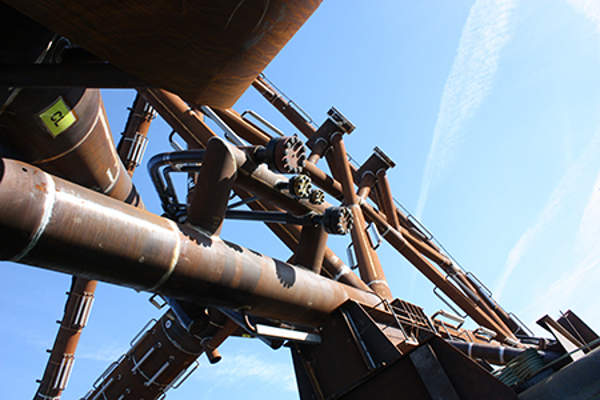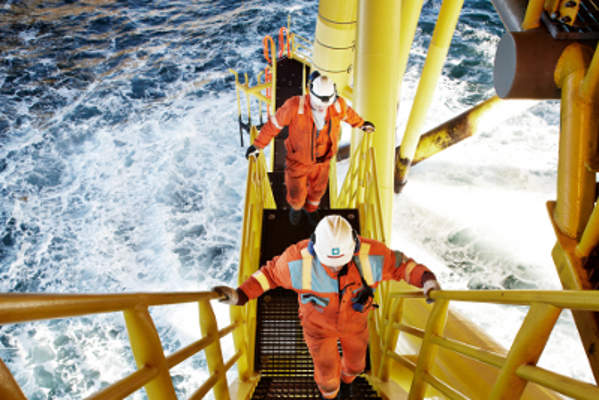Tyra Southeast Oil and Gas Field is located in block 5504/12, approximately 220km offshore of the west coast of Denmark in the North Sea, at a water depth of 38m.
The operation of the oil and gas field comes under the jurisdiction of the Danish Underground Consortium (DUC), with Maersk Oil as the operator, holding a 31.2% interest. Other partners are Shell, holding a 36.8% share, Nordsofonden holding a 20% share and Chevron holding a 12% share.
A major expansion project is currently underway at the oil field to enable it to produce a further 50 million barrels of oil equivalent. The field, upon completion of the expansion, is expected to produce oil and gas for 30 years. Production from the expansion commenced in March 2015.
Tyra Southeast discovery and reserves
Tyra Southeast was discovered in 1991 by well 5504/12-04 using the jack-up drilling rig West Sigma (now known as the Noble Lynda Bossler).
The field was developed as a satellite to the Tyra Field with an unmanned platform. The production is separated into gas and liquids, which are transported to Tyra East (TE) via two pipelines for further processing. Production from the field started in 2002.
The expansion project will enable the field to produce 20 million barrels of oil and 170 billion standard cubic feet of gas.
The field is expected to reach its peak production in 2017 delivering approximately 20,000 barrels of oil a day.
Expansion of the Danish oil and gas field
A plan to further develop the field was submitted to the Danish Energy Agency in August 2012. The field development plans were approved in November 2012. Maersk Oil announced the expansion plan in April 2013.
The expansion involves the installation of a new unmanned platform, a bridge to tie-in the existing Tyra central processing platform, wellheads and wellheads structures, and the drilling of 12 additional wells.
Lift gas to assist both new and old wells is supplied through a new pipeline from TE. Furthermore, the project also involves the installation of a combined power and communication cable along the new pipeline from TE to the new platform.
Each of the 12 horizontal wells will be 6km in length. The drilling works for the 12 wells will be carried out up to 2017.
Development and infrastructure of Tyra Southeast
Tyra field was discovered in 1968 and started production in 1984. The field has reserves of roughly 1.25 trillion cubic feet. It currently comprises 22 gas wells, 29 oil and gas wells and 18 injection wells.
The field has two platform composites, namely Tyra West and Tyra East. Tyra East is equipped with two fixed wellhead platforms capable of accommodating 96 people, one processing and accommodation platform, one gas flare stack, one riser platform and facilities for the final processing of gas, oil, condensate and water.
Tyra East receives gas, oil and liquids from the Roar, Svend, Tyra South-East, Harald, Gorm, Halfdan and Valdemar satellite fields.
Contractors involved with expanding Denmark’s Tyra Southeast
The first contract for the expansion project was awarded to Bladt Industries to design and construct the Tyra Southeast unmanned platform. Under the engineering, procurement and construction (EPC) contract, the company constructed the four-legged jacket and bridge linking the new platform with the existing one and a 16-slot wellhead topside weighing 1,100t. The facilities were built at the company’s quayside in Aalborg, Denmark.










